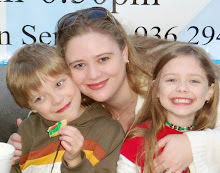This was the neatest thing to be able to view. Apparently it won't happen for another 44 years.
It was COLD outside and I had a heck of a time getting this photo, my camera absolutely did not want to focus on anything. But we got one at least! I had Matthew stand up on our vehicle for this. In hindsight it would have been kinda neat taking it from the ground at an angle.
Anyway....
Here's a little bit about it:
Monday, December 1, 2008.
Have you noticed the two bright objects low in the west after sunset?
They’re Venus and Jupiter, and you’ll find them in a beautiful arrangement with the waxing crescent moon in the evening twilight sky. They’re the brightest lights up after the sun goes down. But remember that all three of these worlds – the moon, Venus and Jupiter – shine by reflecting the sun’s light. Here they are in their order of brightness – the waxing crescent moon- the queen planet Venus – and the king planet Jupiter.
If you live at mid- and far-northern latitudes – like in North America or Europe – the moon, Venus and Jupiter appear low in your southwestern sky in early evening. If you live south of the equator – maybe Australia – this threesome appears almost due west after sunset.
If you live in Europe, you might not see Venus for a portion of the evening, even as you’re looking at the moon and Jupiter. As seen from much of Europe this evening, the moon will occult – or pass in front of – Venus, blocking the planet from view for an hour or more.
So no matter where you live, watch for the moon, Venus and Jupiter after sunset. They set about 3 hours after the sun. If you have binoculars, turn them on these objects to see the soft glow of earthshine on the dark part of the moon!
As seen from much of Europe this evening, the crescent moon will occult – cover over – the planet Venus for a portion of the evening. At Leipzig, Germany, for instance, the moon will occult Venus from 16:07:34 to 17:25:27 Universal Time (5:07:34 p.m. to 6:25:27 p.m. Central European Time). The occultation times for your sky are listed on this International Occultation Timing Association (IOTA) page.






